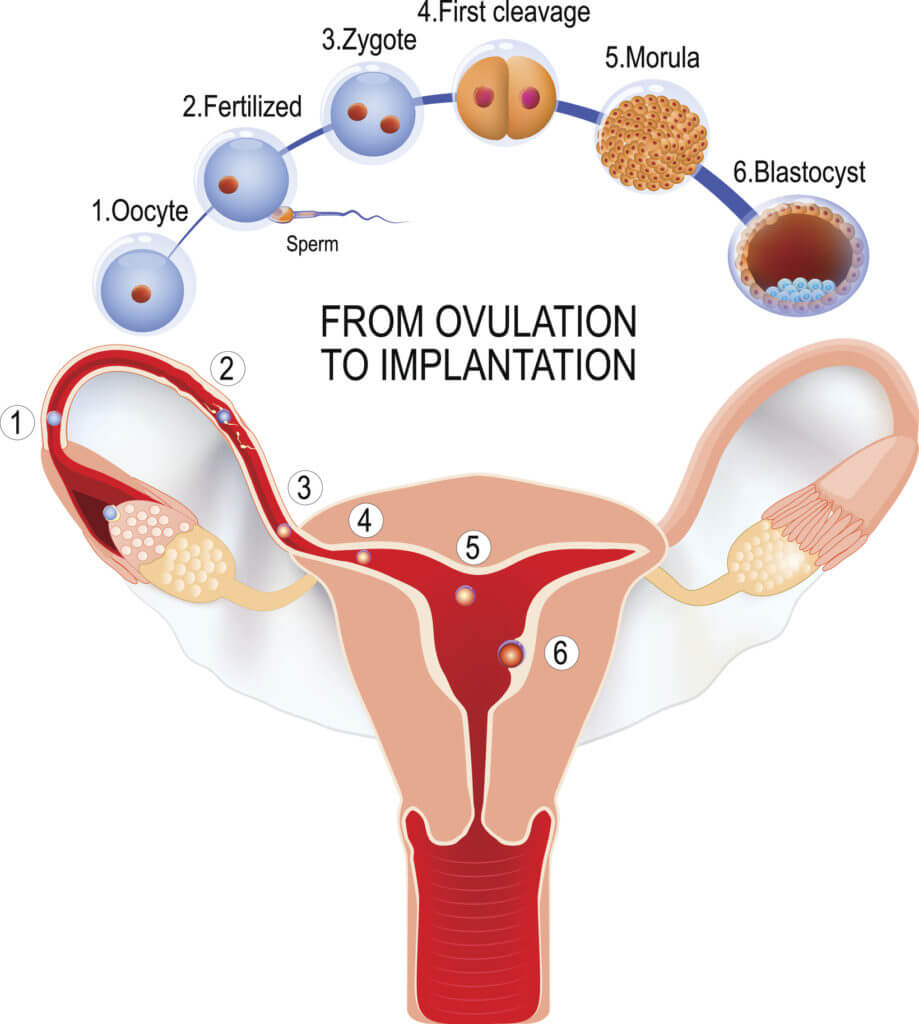In simple terms a blastocyst is an embryo which has been left to develop until day 5 or 6 and presents a complex cellular structure formed by approximately 200 cells.
During conception, the egg is fertilized by sperm in the fallopian tube and an embryo is formed. The embryo usually reaches the uterine cavity about 5 or 6 days after fertilization. At this time, it is a blastocyst, or an embryo made up of hundreds of cells.
When undergoing IVF, a blastocyst is the stage the embryo reaches after 5 days in culture from the egg retrieval. During the three first days of development the embryos start to divide in separate cells, and they are called cleavage embryos. It is only from day 3 to day 5 that the blastocyst is formed.
Why are blastocysts important?
While the majority of fertilized eggs will develop into a three-day old embryo, only perhaps 40% of these embryos will develop into a blastocyst. Therefore, blastocysts are considered to be a more “select” group of embryos with a higher chance of pregnancy.
What is the advantage of blastocyst culture?
Sometimes it is not possible to select the best quality embryo(s) to transfer at the day 3 stage. This is because at this stage all the embryos can still look relatively similar and it is impossible to select which embryo is capable of forming a pregnancy over those which are unlikely to. In such circumstances there is a tremendous advantage to let the embryos develop on for another 48 hours and allow them to develop into blastocysts.
Subsequently, by letting the embryos develop to the blastocyst stage the embryologist will be able to make a better choice of which embryo(s) to transfer back.
The blastocyst is a much more complex structure than that of the cleavage embryo. The number of cells has increased to reach over a 100. Under the microscope it is even possible to distinguish the two different cell types that have started to develop. The first of these cell types is known as the Inner Cell Mass (ICM), this is earliest sign of fetal development and is the part of the blastocyst that develops into the baby. The second of the cell types is known as the trophectoderm or trophoblast. These are specialized cells which develop the placenta and are important in embryo implantation.
What is the difference between a normal embryo transfer and a blastocyst transfer?
The transfer procedure for a blastocyst is identical to that for a normal embryo transfer. However, the key difference is that a blastocyst is implanted back into the womb five to six days following the egg collection whereas an embryo is implanted two to three days following egg collection.
What are the risks of a blastocyst transfer?
Not every embryo is capable of forming a blastocyst. Therefore, there is the small possibility that the IVF cycle may not result in a transfer of any embryos if none of the three-day old embryos develop into blastocysts. We believe that if blastocysts development does not occur, it is unlikely that a pregnancy would not have developed if the embryos had been transferred at the 3-day old stage.
In practice however, it is very rare for no embryos to develop to a blastocyst. If the embryologists have any concerns about the development, they will discuss the possibility of transferring the embryos back into the womb earlier and not letting them develop to blastocysts.
Egg Donation, Inc’s Southern California agency in Los Angeles is proud to work alongside some of the best IVF Clinics throughout the Nation. Your decision is the right one and when you are ready, we will be too. We are host to one of the most successful donor egg programs in the United States and the world. At the forefront of advances in egg donation technology including egg banking of frozen donor eggs, we invite you to see why we are one of the leading egg donation agencies. Visit our about us pages to see what makes us the agency of choice.
Story Source: This article originally appeared on Care Fertility’s website.


